Popular categories
Looking for a yarn?

50% Wool, 25% Alpaca, 25% Viscose
from 4.00 £ /50g
Order DROPS Kid-Silk from Wool Warehouse Direct Ltd

|
DROPS Kid-Silk uni colour 75% Mohair, 25% Silk |
4.60 £ /25g |
Order |
Clicking the ORDER button will redirect you to Wool Warehouse Direct Ltd website
Order DROPS Needles & Hooks
Clicking the ORDER button will redirect you to Wool Warehouse Direct Ltd website
The yarn cost is calculated from the pattern’s smallest size and the yarn’s cheapest product type. Looking for an even better price? You might find it on the DROPS Deals!
Bright Moon Rising
Knitted jumper in DROPS Soft Tweed and DROPS Kid-Silk. The piece is worked top down with raglan, double neck and split in sides. Sizes S - XXXL.
DROPS Design: Pattern st-041
Yarn group B + A
-------------------------------------------------------
SIZES:
S - M - L - XL - XXL - XXXL
YARN:
DROPS SOFT TWEED from Garnstudio (belongs to yarn group B)
300-350-350-400-450-500 g colour 01, off white
And use:
DROPS KID-SILK fra Garnstudio (belongs to yarn group A)
100-100-125-125-150-150 g colour 01, off white
NEEDLES:
DROPS CIRCULAR NEEDLE SIZE 5.5 MM: Length 40 cm and 80 cm.
DROPS CIRCULAR NEEDLE SIZE 4.5 MM: Length 40 cm and 80 cm.
DROPS DOUBLE POINTED NEEDLES SIZE 5.5 MM.
DROPS DOUBLE POINTED NEEDLES SIZE 4.5 MM.
The technique MAGIC LOOP can be used – you then only need 80 cm circular needle in each size.
KNITTING TENSION:
16 stitches in width and 20 rows in height with stocking stitch and 1 strand of each quality = 10 x 10 cm.
NOTE: Needle size is only a guide. If you get too many stitches on 10 cm, change to a larger needle size. If you get too few stitches on 10 cm, change to a smaller needle size.
-------------------------------------------------------
Alternative Yarn – See how to change yarns here
Yarn Groups A to F – Use the same pattern and change the yarn here
Yarn usage using an alternative yarn – Use our yarn converter here
-------------------------------------------------------

50% Wool, 25% Alpaca, 25% Viscose
from 4.00 £ /50g
Order DROPS Soft Tweed from Wool Warehouse Direct Ltd

|
DROPS Kid-Silk uni colour 75% Mohair, 25% Silk 4.60 £ /25g Order |
Clicking the ORDER button will redirect you to Wool Warehouse Direct Ltd website
Order DROPS Needles & Hooks
Clicking the ORDER button will redirect you to Wool Warehouse Direct Ltd website
The yarn cost is calculated from the pattern’s smallest size and the yarn’s cheapest product type. Looking for an even better price? You might find it on the DROPS Deals!
- English (UK/cm)
- Česky
- Dansk
- Deutsch
- Eesti keel
- English (US/in)
- Español
- Français
- Íslenska
- Italiano
- Magyar
- Nederlands
- Norsk
- Polski
- Português
- Suomi
- Svenska
- English (UK/cm), Bulgaria
- English (UK/cm), Croatia
- English (UK/cm), Greece
- English (UK/cm), Latvia
- English (UK/cm), Lithuania
- English (UK/cm), Romania
- English (UK/cm), Slovenia
- Česky, Slovakia
Pattern instructions
EXPLANATIONS FOR THE PATTERN:
-------------------------------------------------------
GARTER STITCH (worked back and forth):
Knit all rows.
1 ridge = knit 2 rows.
RAGLAN:
Increase 1 stitch before/after 6 stitches in each transition between the body and sleeves; marker-thread sits in the middle of these 6 stitches (2 purled, 2 knitted, 2 purled). Increase 1 stitch by making 1 yarn over, which is knitted twisted on the next round to avoid a hole. The new stitches are worked in stocking stitch.
DECREASE TIP (for sleeves):
Start 3 stitches before the marker-thread, knit 2 together, knit 2 (marker-thread sits between these 2 stitches), slip 1 stitch knit-wise, knit 1 and pass the slipped stitch over the knitted stitch.
-------------------------------------------------------
START THE PIECE HERE:
-------------------------------------------------------
JUMPER – SHORT OVERVIEW OF THE PIECE:
The neck and yoke are worked in the round with circular needle, from mid back and top down. The yoke is divided for body and sleeves and the body is continued in the round with circular needle. The sleeves are worked with short circular needle/double pointed needles.
DOUBLE NECK:
Cast on 88-88-88-104-104-104 stitches with 1 strand DROPS Soft Tweed and 1 strand DROPS Kid-Silk using short circular needles size 5.5 and 4.5 mm held together. Remove the needle size 5.5 mm keeping stitches on the circular needle size 4.5 mm (this gives you an elastic cast-on edge). Knit 1 round, then work rib as follows: Knit 1, *purl 2, knit 2 *, work from *-* until there are 3 stitches left, purl 2 and knit 1. Work this rib for 9 cm.
Insert 4 marker-threads without working the stitches. These threads are used when increasing for raglan and each one is inserted between 2 knitted stitches.
Count 12-12-12-16-16-16 stitches (half back piece), insert 1 marker-thread, count 20 stitches (sleeve), insert 1 marker-thread, count 24-24-24-32-32-32 stitches (front piece), insert 1 marker-thread, count 20 stitches (sleeve), insert 1 marker-thread, there are 12-12-12-16-16-16 stitches left after the last marker-thread (half back piece).
NECKLINE:
Change to circular needle size 5.5 mm. Work a neckline with short rows as described below. Work stocking stitch with 6 stitches in each raglan-line (2 purled, 2 knitted, 2 purled, seen from the right side, and with the marker-thread between the 2 knitted stitches).
ROW 1 (right side): Knit and increase for RAGLAN – read description above, on each side of the first 2 marker-threads (4 stitches increased). Turn when you have knitted 5 stitches past the 2nd marker-thread (front left of neck when the garment is worn).
ROW 2 (wrong side): Purl, turn when you have purled 5 stitches past the last marker-thread.
ROW 3 (right side): Knit and increase for raglan on each side of all 4 marker-threads (8 stitches increased), Turn when you have knitted 2 stitches past the previous turn.
ROW 4 (wrong side): Purl, turn when you have purled 2 stitches past the previous turn.
ROW 5 (right side): Knit and increase for raglan on each side of all 4 marker-threads (8 stitches increased), turn when you have knitted 2 stitches past the previous turn.
ROW 6 (wrong side): Purl, turn when you have purled 2 stitches past the previous turn.
ROW 7 (right side): Knit and increase for raglan on each side of the first 2 marker-threads (4 stitches increased), knit to mid-back.
The short rows are finished and you have increased for raglan 3 times at each marker-thread = 112-112-112-128-128-128 stitches. Knit 1 round without increasing.
YOKE:
Work stocking stitch in the round and increase for raglan as follows: Increase every 2nd round on each side of all 4 marker-threads 3 times = 136-136-136-152-152-152 stitches. Continue to increase every 2nd round but every 2nd increase is only on the front/back pieces, i.e., increase on the front/back pieces every 2nd round and on the sleeves every 4th round (alternately 4 and 8 increased stitches). REMEMBER THE KNITTING TENSION! Increase like this 14-16-20-22-24-24 times on the body (7-8-10-11-12-12 times on the sleeves) = 220-232-256-284-296-296 stitches.
Sizes S, M, L, XXL and XXXL (increases in size XL are finished):
Continue with stocking stitch and increase for raglan on the front/back pieces. The sleeve increases are finished. Increase every 2nd round 3-3-2-1-5 times.
ALL SIZES:
You have now increased a total of 23-25-28-28-31-35 times on the body and 13-14-16-17-18-18 times on the sleeves (including the increases on the short rows).
There are 232-244-264-284-300-316 stitches. Continue with stocking stitch, without further increases, until the yoke measures 23-25-28-28-31-35 cm, measured mid-front after the ribbed neck.
Divide for the body and sleeves:
Work the first 35-37-40-44-47-51 stitches (half back piece), place the next 46-48-52-54-56-56 stitches on 1 thread for the sleeve, cast on 10-12-12-14-16-18 stitches (in side under sleeve), work 70-74-80-88-94-102 stitches (front piece), place the next 46-48-52-54-56-56 stitches on 1 thread for the sleeve, cast on 10-12-12-14-16-18 stitches (in side under sleeve), work the remaining 35-37-40-44-47-51 stitches (half back piece).
BODY:
= 160-172-184-204-220-240 stitches. Start in the middle of the cast-on stitches under one sleeve and continue stocking stitch in the round for a further 17-17-16-18-17-15 cm. Place the last 80-86-92-102-110-120 stitches on a thread and work the first 80-86-92-102-110-120 stitches. Knit 1 row and increase 22-24-28-28-28-30 stitches evenly spaced = 102-110-118-130-138-150 stitches. Change to circular needle 4.5 mm. Work rib as follows (from the wrong side): 2 GARTER STITCHES – read description above, * purl 2, knit 2 *, work from *-* until there are 4 stitches left, purl 2 and 2 garter stitches. Work this rib for 12 cm. Cast off. The jumper measures approx. 58-60-62-64-66-68 cm from the shoulder. Work the back piece in the same way.
SLEEVES:
Place the 46-48-52-54-56-56 stitches from the thread on the one side of the piece on short circular needle/double pointed needles size 5.5 mm and knit up 1 stitch in each of the 10-12-12-14-16-18 stitches cast on under the sleeve = 56-60-64-68-72-74 stitches. Insert a marker in the middle of the new stitches under the sleeve.
Work stocking stitch in the round
When the sleeve measures 3 cm decrease 2 stitches mid under sleeve – read DECREASE TIP. Decrease like this every 4-3-2½-1½-1½-1 cm a total of 6-8-9-11-10-10 times = 44-44-46-46-52-54 stitches. Continue working until the sleeve measures 34-33-31-30-28-25 cm from the division. Knit 1 round and increase 8-8-10-10-8-10 stitches evenly spaced = 52-52-56-56-60-64 stitches. Change to double pointed needles size 4.5 mm and work rib (knit 2, purl 2) for 10 cm. Cast off. The sleeve measures approx. 44-43-41-40-38-35 cm from the division.
Work the other sleeve in the same way.
ASSEMBLY:
Fold the neck double to the inside and fasten down.
Sew the top 4 cm of each split together, sewing in the outermost loop of the outermost stitch so the seam is flat (leaves a 8 cm split).
Diagram

What can you do with our patterns? You can share DROPS patterns online, using the pattern original picture, materials, name and number. But you are NOT ALLOWED to reproduce the complete pattern digitally in any way. Yarn stores are welcome to use the DROPS pattern database to promote the sale of our assortment. You can print out our patterns, make as many copies as you’d like. The only thing we ask is that you don't make any changes / additions to the original printed document. And that the patterns according to the DROPS philosophy are given out to the consumers for free. Editorials that wish to publish our patterns in printed books or magazines can contact us for more information. The sale of garments based on DROPS patterns is permitted as long as they are sold as single items or per order. Further commercial use of the patterns is not permitted. It has to be clearly stated that the garment is made based on a design from DROPS DESIGN. The use of clothing labels of which DROPS DESIGN forms part is conditioned by the inclusion of the following text: “A DROPS DESIGN made by …..”. The use of DROPS photos for marketing purposes/sales is only permitted in connection with the use/sale of DROPS products. The photos may not be cut or edited and the logo should be clearly visible.
We reserve the right to withdraw the permission for use of our patterns at any time, notwithstanding the reason.
Each of our patterns has specific tutorial videos to help you.
These step-by-step tutorials might also help you:
Why is the knitting/crochet tension so important?
Knitting tension is what determines the final measurements of your work, and is usually measured per 10 x 10 cm. It is provided like so: number of stitches in width x number of rows in height - eg: 19 stitches x 26 rows = 10 x 10 cm.
The knitting tension is very individual; some people knit/crochet loosely while others work tightly. You adjust the knitting tension with the needle size, which is why the suggested needle size is only meant as a guide! You need to adjust this (up or down) to ensure that YOUR knitting tension matches the knitting tension provided in the pattern. If you work with a different knitting tension than provided you will have a different yarn consumption, and your work will have different measurements than what the pattern suggests.
The knitting tension also determines which yarns can replace each other. As long as you achieve the same knitting tension you can replace one yarn with another.
See DROPS lesson: How to measure your tension/gauge
See DROPS video: How to make a gauge tension swatch
How do I know how many balls of yarn I need?
The required amount of yarn is provided in grams, eg: 450 g. To calculate how many balls you’ll need you first need to know how many grams are in 1 ball (25g, 50g or 100g). This information is available if you click on the individual yarn quality on our pages. Divide the amount required with the amount of each ball. For example, if each ball is 50g (the most common amount), the calculation will be as follows: 450 / 50 = 9 balls.
Can I use a different yarn than what the pattern suggests?
The important thing when changing from one yarn to another is that the knitting/crochet tension remains the same. This is so that the measurements of the finished piece will be the same as on the sketch provided. It is easier to achieve the same knitting tension using yarns from the same yarn group. It is also possible to work with multiple strands of a thinner yarn to achieve the knitting tension of a thicker one. Please try our yarn converter. We recommend you to always work a test swatch.
Please NOTE: when changing yarn the garment might have a different look and feel to the garment in the photo, due to individual properties and qualities of each yarn.
See DROPS lesson: Can I use a different yarn than the one mentioned in the pattern?
What are the yarn groups?
All our yarns are categorised into yarn groups (from A to F) according to thickness and knitting tension – group A contains the thinnest yarns and group F the thickest. This makes it easier for you to find alternative yarns to our patterns, should you wish to switch yarn. All yarns within the same group have a similar knitting tension and can easily replace each other. However, different yarn qualities have different structures and properties which will give the finished work a unique look and feel.
How do I use the yarn calculator?
At the top of all our patterns you’ll find a link to our yarn calculator, which is a helpful tool should you wish to use a different yarn than suggested. By filling in the yarn quality you wish to replace, the amount (in your size) and number of strands, the calculator will present good alternative yarns with the same knitting tension. Additionally it will tell you how much you’ll require in the new qualities and whether you’ll need to work with multiple strands. Most skeins are 50g (some are 25g or 100g).
If the pattern is worked with multiple colours, every colour will have to be calculated separately. Similarly, if the pattern is worked with several strands of different yarns (for example 1 strand Alpaca and 1 strand Kid-Silk) you will have to find alternatives for each, individually.
Why do you show discontinued yarns in the patterns?
Since different yarns have different qualities and textures we have chosen to keep the original yarn in our patterns. However, you can easily find options among our available qualities by using our yarn calculator, or simply pick a yarn from the same yarn group.
It is possible that some retailers still have discontinued yarns in stock, or that someone has a few skeins at home that they would like to find patterns for.
The yarn calculator will provide both alternative yarn as well as required amount in the new quality.
What size should I knit?
If you think it's hard to decide what size to make, it can be a good idea to measure a garment you own already and like the size of. Then you can pick the size by comparing those measures with the ones available in the pattern's size chart.
You'll find the size chart at the bottom of the pattern.
See DROPS lesson: How to read size chart
Why do I get the wrong knitting tension with the suggested needle size?
The needle size provided in the pattern serves only as a guide, the important thing is to follow the knitting tension. And since knitting tension is very individual, you will have to adjust the needle size to ensure that YOUR tension is the same as in the pattern – maybe you’ll have to adjust 1, or even 2 needle sizes, up or down to achieve the correct tension. For this, we recommend that you work test swatches.
Should you work with a different knitting tension than the one provided, the measurements of the finished garment might deviate from the measurement sketch.
See DROPS lesson: How to measure your tension/gauge
See DROPS video: How to make a tension/gauge swatch
Why is the pattern worked top-down?
Working a garment top-down provides more flexibility and room for personal adjustment. For example it is easier to try the garment on while working, as well as making adjustments to length of yoke and shoulder caps.
The instructions are carefully explaining every step, in the correct order. Diagrams are adjusted to the knitting direction and are worked as usual.
How do I work according to a knitting diagram?
The diagram depicts all rows/rounds, and every stitch seen from the right side. It is read from bottom to top, from right to left. 1 square = 1 stitch.
When working back and forth, every other row is worked from the right side and every other row is worked from the wrong side. When working from the wrong side, the diagram will have to be worked reversed: from left to right, knit stitches are purled, purl stitches are knit etc.
When working in the round every round is worked from the right side and the diagram are worked from right to left on all rounds.
See DROPS lesson: How to read knitting diagrams
How do I work according to a crochet diagram?
The diagram depicts all rows/rounds, and every stitch seen from the right side. It is worked from bottom to top, from right to left.
When working back and forth every other row is worked from the right side: from right to left and every other row is worked from the wrong side: from left to right.
When working in the round, every row in the diagram are worked from the right side, from right to left.
When working a circular diagram you start in the middle and work your way outwards, counter clockwise, row by row.
The rows usually start with a given number of chain stitches (equivalent to the height of the following stitch), this will either be depicted in the diagram or explained in the pattern.
See DROPS lesson: How to read crochet diagrams
How do I work several diagrams simultaneously on the same row/round?
Instructions for working several diagrams after each other on the same row/round, will often be written like so: “work A.1, A.2, A.3 a total of 0-0-2-3-4 times". This means you work A.1 once, then A.2 is worked once, and A.3 is repeated (in width) the number of times provided for your size – in this case like so: S = 0 times, M = 0 times, L=2 times, XL= 3 times and XXL = 4 times.
The diagrams are worked as usual: begin with the first row in A.1, then work the first row in A.2 etc.
See DROPS lesson: How to read knitting diagrams
See DROPS lesson: How to read crochet diagrams
Why are the sleeves shorter in larger sizes?
The total width of the garment (from wrist-to-wrist) will be larger in the larger sizes, despite the actual sleeves being shorter. The larger sizes have longer sleeve caps and wider shoulders, so there will be a good fit in all sizes.
Where on the garment is the length measured?
The measurement sketch/schematic drawing provides information regarding the full length of the garment. If it’s a jumper or a jacket the length is measured from the highest point on the shoulder closest to the neckline, and straight down to the bottom of the garment. It is NOT measured from the tip of shoulder. Similarly, the length of yoke is measured from the highest point on the shoulder and down to where yoke is split into body and sleeves.
On a jacket measures are never taken along bands, unless specifically stated. Always measure inside band stitches when measuring the length.
See DROPS lesson: How to read a schematic drawing
What is a repeat?
Diagrams are often repeated on the round or in height. 1 repeat is the diagram the way it appears in the pattern. If it says to work 5 repeats of A.1 in the round, then you work A.1 a total of 5 times after/next to each other in the round. If it says to work 2 repeats of A.1 vertically/in height you work the entire diagram once, then begin again at the start and work the entire diagram one more time.
Why does the piece start with more chain stitches than it’s worked with?
Chain stitches are slightly narrower than other stitches and to avoid working the cast-on edge too tight, we simply chain more stitches to begin with. The stitch count will be adjusted on the following row to fit the pattern and measurement sketch.
Why increase before the rib edge when the piece is worked top-down?
The rib edge is more elastic and will contract slightly compared to, for example, stocking stitch. By increasing before the rib edge, you avoid a visible difference in width between the rib edge and the rest of the body.
Why increase in the cast-off edge?
It’s very easy to cast off too tightly, and by making yarn overs while casting off (and simultaneously casting these off) you avoid a too tight cast off edge.
See DROPS video: How to bind off with yarn overs (yo)
How do I increase/decrease on every 3rd and 4th row/round alternately?
To achieve an even increase (or decrease) you can increase on, for example: every 3rd and 4th row alternately, like so: work 2 rows and increase on the 3rd row, work 3 rows and increase on the 4th. Repeat this until the increase is complete.
See DROPS lesson: Increase or decrease 1 st on every 3rd and 4th row alternately
How can I work a jacket in the round instead of back and forth?
Should you prefer to work in the round instead of back and forth, you may of course adjust the pattern. You’ll need to add steeks mid-front (usually 5 stitches), and follow the instructions. When you would normally turn and work from the wrong side, simply work across the steek and continue in the round. At the end you’ll cut the piece open, pick up stitches to work bands, and cover the cut edges.
See DROPS video: How to knit steeks and cut open
Can I work a jumper back and forth instead of in the round?
Should you prefer to work back and forth instead of in the round, you may of course adjust the pattern so you work the pieces separately and then assemble them at the end. Divide the stitches for the body in 2, add 1 edge stitch in each side (for sewing) and work the front and back pieces separately.
See DROPS lesson: Can I adapt a pattern for circular needles into straight needles?
Why is the pattern slightly different than what I see in the photo?
Pattern repeats can vary slightly in the different sizes, in order to get the correct proportions. If you’re not working the exact same size as the garment in the photo, yours might deviate slightly. This has been carefully developed and adjusted so that the complete impression of the garment is the same in all sizes.
Make sure to follow instructions and diagrams for your size!
How do I make a women’s size garment into a men’s size one?
If you have found a pattern you like which is available in women’s size it’s not very difficult to convert it to men’s size. The biggest difference will be the length of sleeves and body. Start working on the women size that you think would fit across the chest. The additional length will be worked right before you cast off for the armhole/sleeve cap. If the pattern is worked top-down you can add the length right after the armhole or before the first decrease on sleeve.
Regarding additional yarn amount, this will depend on how much length you add, but it is better with a skein too many than too few.
How do I prevent a hairy garment from shedding?
All yarns will have excess fibres (from production) that might come off as lint or shedding. Brushed yarns (ie hairier yarns) have more of these loose, excess fibres, causing more shedding.
Shedding also depends on what is worn under or over the garment, and whether this pulls at the yarn fibres. It’s therefore not possible to guarantee that there will be no shedding
Below are some tips on how to get the best result when working with hairier yarns:
1. When the garment is finished (before you wash it) shake it vigorously so the looser hairs come off. NOTE: do NOT use a lint roller, brush or any method that pulls at the yarn.
2. Place the garment in a plastic bag and put it in your freezer - the temperature will cause the fibres to become less attached to each other, and excess fibres will come off easier.
3. Leave in the freezer for a few hours before taking it out and shaking it again.
4. Wash the garment according to the instructions on the yarn label.
Why does my garment pill?
Pilling is a natural process that happens to even the most exclusive of fibers. It's a natural sign of wear and tear that is hard to avoid, and that is most visible in high friction areas of your garment like a sweater's arms and cuffs.
You can make your garment look as new by removing the pilling, using a fabric comb or a pill/lint remover.
In the meantime, you can read the questions and answers that others have left to this pattern or join the DROPS Workshop on Facebook to get help from fellow knitters/crocheters!
You might also like...
Bright Moon Rising |
|
 |
 |
Knitted jumper in DROPS Soft Tweed and DROPS Kid-Silk. The piece is worked top down with raglan, double neck and split in sides. Sizes S - XXXL.
DROPS 245-23 |
|
|
------------------------------------------------------- EXPLANATIONS FOR THE PATTERN: ------------------------------------------------------- GARTER STITCH (worked back and forth): Knit all rows. 1 ridge = knit 2 rows. RAGLAN: Increase 1 stitch before/after 6 stitches in each transition between the body and sleeves; marker-thread sits in the middle of these 6 stitches (2 purled, 2 knitted, 2 purled). Increase 1 stitch by making 1 yarn over, which is knitted twisted on the next round to avoid a hole. The new stitches are worked in stocking stitch. DECREASE TIP (for sleeves): Start 3 stitches before the marker-thread, knit 2 together, knit 2 (marker-thread sits between these 2 stitches), slip 1 stitch knit-wise, knit 1 and pass the slipped stitch over the knitted stitch. ------------------------------------------------------- START THE PIECE HERE: ------------------------------------------------------- JUMPER – SHORT OVERVIEW OF THE PIECE: The neck and yoke are worked in the round with circular needle, from mid back and top down. The yoke is divided for body and sleeves and the body is continued in the round with circular needle. The sleeves are worked with short circular needle/double pointed needles. DOUBLE NECK: Cast on 88-88-88-104-104-104 stitches with 1 strand DROPS Soft Tweed and 1 strand DROPS Kid-Silk using short circular needles size 5.5 and 4.5 mm held together. Remove the needle size 5.5 mm keeping stitches on the circular needle size 4.5 mm (this gives you an elastic cast-on edge). Knit 1 round, then work rib as follows: Knit 1, *purl 2, knit 2 *, work from *-* until there are 3 stitches left, purl 2 and knit 1. Work this rib for 9 cm. Insert 4 marker-threads without working the stitches. These threads are used when increasing for raglan and each one is inserted between 2 knitted stitches. Count 12-12-12-16-16-16 stitches (half back piece), insert 1 marker-thread, count 20 stitches (sleeve), insert 1 marker-thread, count 24-24-24-32-32-32 stitches (front piece), insert 1 marker-thread, count 20 stitches (sleeve), insert 1 marker-thread, there are 12-12-12-16-16-16 stitches left after the last marker-thread (half back piece). NECKLINE: Change to circular needle size 5.5 mm. Work a neckline with short rows as described below. Work stocking stitch with 6 stitches in each raglan-line (2 purled, 2 knitted, 2 purled, seen from the right side, and with the marker-thread between the 2 knitted stitches). ROW 1 (right side): Knit and increase for RAGLAN – read description above, on each side of the first 2 marker-threads (4 stitches increased). Turn when you have knitted 5 stitches past the 2nd marker-thread (front left of neck when the garment is worn). ROW 2 (wrong side): Purl, turn when you have purled 5 stitches past the last marker-thread. ROW 3 (right side): Knit and increase for raglan on each side of all 4 marker-threads (8 stitches increased), Turn when you have knitted 2 stitches past the previous turn. ROW 4 (wrong side): Purl, turn when you have purled 2 stitches past the previous turn. ROW 5 (right side): Knit and increase for raglan on each side of all 4 marker-threads (8 stitches increased), turn when you have knitted 2 stitches past the previous turn. ROW 6 (wrong side): Purl, turn when you have purled 2 stitches past the previous turn. ROW 7 (right side): Knit and increase for raglan on each side of the first 2 marker-threads (4 stitches increased), knit to mid-back. The short rows are finished and you have increased for raglan 3 times at each marker-thread = 112-112-112-128-128-128 stitches. Knit 1 round without increasing. YOKE: Work stocking stitch in the round and increase for raglan as follows: Increase every 2nd round on each side of all 4 marker-threads 3 times = 136-136-136-152-152-152 stitches. Continue to increase every 2nd round but every 2nd increase is only on the front/back pieces, i.e., increase on the front/back pieces every 2nd round and on the sleeves every 4th round (alternately 4 and 8 increased stitches). REMEMBER THE KNITTING TENSION! Increase like this 14-16-20-22-24-24 times on the body (7-8-10-11-12-12 times on the sleeves) = 220-232-256-284-296-296 stitches. Sizes S, M, L, XXL and XXXL (increases in size XL are finished): Continue with stocking stitch and increase for raglan on the front/back pieces. The sleeve increases are finished. Increase every 2nd round 3-3-2-1-5 times. ALL SIZES: You have now increased a total of 23-25-28-28-31-35 times on the body and 13-14-16-17-18-18 times on the sleeves (including the increases on the short rows). There are 232-244-264-284-300-316 stitches. Continue with stocking stitch, without further increases, until the yoke measures 23-25-28-28-31-35 cm, measured mid-front after the ribbed neck. Divide for the body and sleeves: Work the first 35-37-40-44-47-51 stitches (half back piece), place the next 46-48-52-54-56-56 stitches on 1 thread for the sleeve, cast on 10-12-12-14-16-18 stitches (in side under sleeve), work 70-74-80-88-94-102 stitches (front piece), place the next 46-48-52-54-56-56 stitches on 1 thread for the sleeve, cast on 10-12-12-14-16-18 stitches (in side under sleeve), work the remaining 35-37-40-44-47-51 stitches (half back piece). BODY: = 160-172-184-204-220-240 stitches. Start in the middle of the cast-on stitches under one sleeve and continue stocking stitch in the round for a further 17-17-16-18-17-15 cm. Place the last 80-86-92-102-110-120 stitches on a thread and work the first 80-86-92-102-110-120 stitches. Knit 1 row and increase 22-24-28-28-28-30 stitches evenly spaced = 102-110-118-130-138-150 stitches. Change to circular needle 4.5 mm. Work rib as follows (from the wrong side): 2 GARTER STITCHES – read description above, * purl 2, knit 2 *, work from *-* until there are 4 stitches left, purl 2 and 2 garter stitches. Work this rib for 12 cm. Cast off. The jumper measures approx. 58-60-62-64-66-68 cm from the shoulder. Work the back piece in the same way. SLEEVES: Place the 46-48-52-54-56-56 stitches from the thread on the one side of the piece on short circular needle/double pointed needles size 5.5 mm and knit up 1 stitch in each of the 10-12-12-14-16-18 stitches cast on under the sleeve = 56-60-64-68-72-74 stitches. Insert a marker in the middle of the new stitches under the sleeve. Work stocking stitch in the round When the sleeve measures 3 cm decrease 2 stitches mid under sleeve – read DECREASE TIP. Decrease like this every 4-3-2½-1½-1½-1 cm a total of 6-8-9-11-10-10 times = 44-44-46-46-52-54 stitches. Continue working until the sleeve measures 34-33-31-30-28-25 cm from the division. Knit 1 round and increase 8-8-10-10-8-10 stitches evenly spaced = 52-52-56-56-60-64 stitches. Change to double pointed needles size 4.5 mm and work rib (knit 2, purl 2) for 10 cm. Cast off. The sleeve measures approx. 44-43-41-40-38-35 cm from the division. Work the other sleeve in the same way. ASSEMBLY: Fold the neck double to the inside and fasten down. Sew the top 4 cm of each split together, sewing in the outermost loop of the outermost stitch so the seam is flat (leaves a 8 cm split). |
|

|
|
|
Have you made this or any other of our designs? Tag your pictures in social media with #dropsdesign so we can see them! Do you need help with this pattern?You'll find tutorial videos, a Comments/Questions area and more by visiting the pattern on garnstudio.com. © 1982-2024 DROPS Design A/S. We reserve all rights. This document, including all its sub-sections, has copyrights. Read more about what you can do with our patterns at the bottom of each pattern on our site. |
|
With over 40 years in knitting and crochet design, DROPS Design offers one of the most extensive collections of free patterns on the internet - translated to 17 languages. As of today we count 304 catalogues and 11422 patterns - 11422 of which are translated into English (UK/cm).
We work hard to bring you the best knitting and crochet have to offer, inspiration and advice as well as great quality yarns at incredible prices! Would you like to use our patterns for other than personal use? You can read what you are allowed to do in the Copyright text at the bottom of all our patterns. Happy crafting!








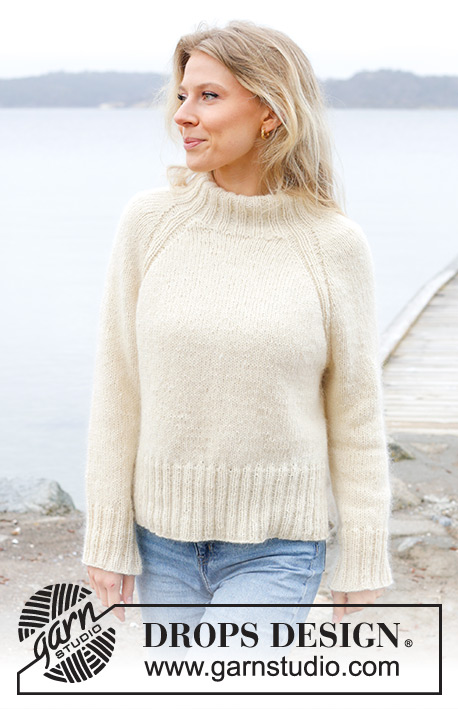
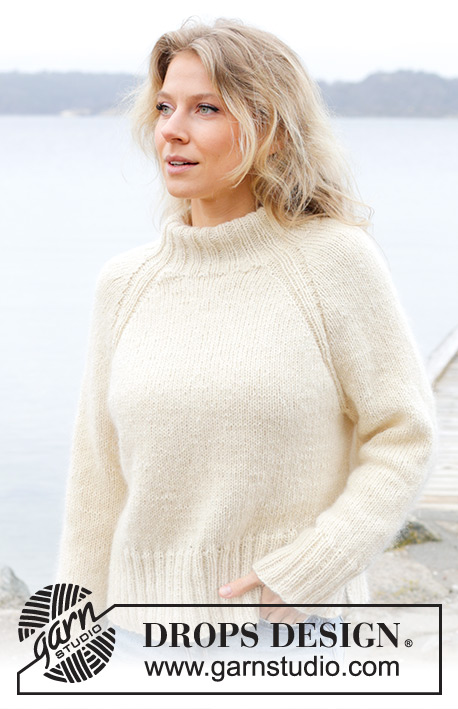



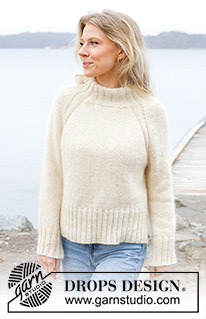
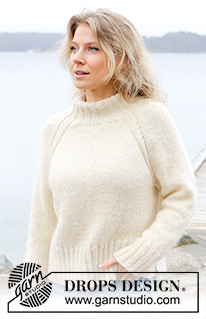

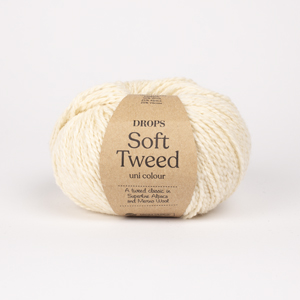



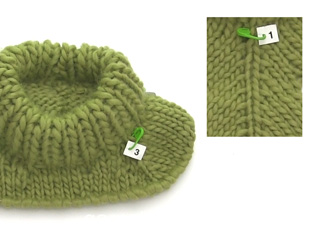













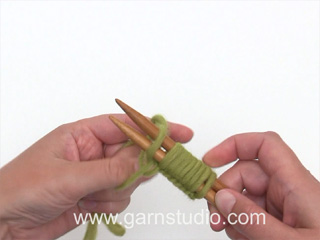







































Comments / Questions (11)
Je penses qu’il y a une inversion des mesures entre col et fin de raglan et fin de raglan et début des côtes sur vos explications ! 17 au lieu de 25 et vice versa
25.02.2024 - 15:49DROPS Design answered:
Bonjour Mme Davesne, les mesures indiquées sont justes dans le schéma et dans les explications, en taille M, on va augmenter 25 fois pour le devant/le dos tous les 2 rangs soit 50 rangs sur la base de 20 rangs = 10 cm, vos 50 rangs doivent mesurer 25 cm (+ 6 cm d'épaules). Bon tricot!
26.02.2024 - 10:21Non capisco …. Devo lavorare semore a maglia rasata eccetto per il raglan che è questo : (2 maglie rovescio, 2 maglie diritto, 2 maglie rovescio)… mentre faccio i Ferri accorciati ho dei giri di rovescio , in quel caso devo lavorare i punti del raglan per come si trovano ?
10.02.2024 - 09:20DROPS Design answered:
Buonasera Tuna, corretto, deve mantenere le maglie del raglan come indicato. Buon lavoro!
17.03.2024 - 18:38Hej Drops 245-23, bluse med raglan. Ved Hals udtagning står der: 2. pind: vend når du har strikket 5 masker forbi den sidste mærketråd.. Men er det den sidste mærketråd FØR midterrækken bag, eller den sidste mærketråd (nr 4) når man har strikket Hele vejen rundt (vrangsiden)? Tak
04.02.2024 - 10:34DROPS Design answered:
Hei Marianne. Det er 3. merke. Når du strikker 1. pinne (retten) starter du midt bak, strikker 5 masker forbi 2 merke (du har da strikket forbi 1. og 2. merke og du har også økt til raglan 4 steder). Snu og nå strikkes det (fra vrangen) først forbi 2. merke, så 1. merke, deretter forbi 4. merke og tilsutt 5 masker forbi 3. merke. Snu og strikk etter 3. pinne i diagrammet. mvh DROPS Design
12.02.2024 - 12:59Bonjour, Je vous écris de Belgique . Après les augmentations du raglan, il me reste a tricoter quelques cm avant de séparer corps et manches. Vous indiquez qu'il faut continuer en Jersey, mais faut-il garder le motif du raglan ou non ? Merci d'avance pour votre réponse.
23.12.2023 - 15:15DROPS Design answered:
Bonjour Catherine, vous pouvez effectivement tricoter les mailles des raglans comme avant pour la continuité. Bon tricot!
02.01.2024 - 07:56Danke für ihre Antwort, leider löst das nicht das Problem. Natürlich habe ich den Garnumwandler benutzt, leider gibt es für Kid-silk keine direkte Alternative. In der Anleitung wird ein Faden aus Gruppe B (soft tweed) und ein Faden aus Gruppe A (Kid silk) verwendet. Könnte man denn ein Garn aus Gruppe C verwenden und dann die Maschenangaben von Größe M stricken um Größe S zu erhalten? MfG Wick-Bork
02.11.2023 - 20:32DROPS Design answered:
Liebe Frau Wick-Bork, gerne können Sie auch ein Garn vom Garngruppe C benutzen, die Maschenprobe sollte diegleiche sein, aber wie immer stricken Sie sie zuerst und passen Sie die Nadelgrösse an - hier finden Sie diese Garnkombination und lesen Sie mehr. Viel Spaß beim stricken!
03.11.2023 - 06:33Guten Abend, ich möchte das Modell 245-23 stricken. Da meine Tochter kratzempfindlich ist, möchte ich die Wolle Kid silk auf keinen Fall nutzen. Welche Wolle könnte ich für dieses Muster verwenden, damit ich die gleiche Maschenzahl nutzen kann ? MfG Angelika Wick-Bork
31.10.2023 - 19:49DROPS Design answered:
Liebe Frau Wick-Bork, benutzen Sie den Garnumrechner, um die Alternativen sowie die neue Garnmenge zu finden, gerne kann Ihnen Ihr DROPS Händler damit helfen, die besten passenden Garne zu empfehen (auch per Telefon oder per E-Mail). Viel Spaß beim stricken!
01.11.2023 - 15:00Mam jeszcze pytanie do momentu: " Zaczynając od boku, na środku oczek nabranych pod jednym z rękawów" - kończąc oddzielanie rękawów znajduję się na połowie tyłu, to się zgadza ze wzorem. Ale dalej mam zacząć pod rękawem. Czy mam więc po prostu przerobić pół tyłu żeby znaleźć się pod rękawem i dopiero od tego momentu liczyć nowy rząd? Z góry dziękuję za odpowiedź :)
10.10.2023 - 18:41DROPS Design answered:
Witaj Julio, jest dokładnie tak jak piszesz. Miłej pracy!
12.10.2023 - 08:40Czy przy tym wzorze mogę użyć Merino extra fine zamiast Soft-Tweed + kid silk? Czy chcąc dziergać jedną włóczką powinnam wybrać grubszą? Drugie pytanie przy rzędzie skróconym nr 2- przerabiamy prawie całość rządka, tak? Przechodzimy przez wszystkie 4 nitki?
03.10.2023 - 10:57DROPS Design answered:
Witaj Julio, aby próbka wyszła zgodna, do Merino Extra Fine musisz jeszcze dodać 1 nitkę Kid-Silka. Co do pytania 2: dokładnie jest jak piszesz, w 2-gim rzędzie skróconym przerabiamy aż za nitkę z prawej strony przodu. Pozdrawiamy!
04.10.2023 - 13:43Mont Blanc
04.08.2023 - 08:25Kiva klassinen neule ja vielä valkoisenakin😍
03.08.2023 - 19:46